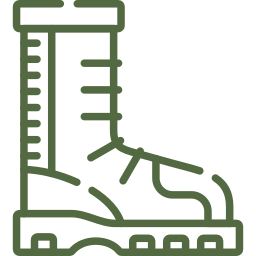Rafting
Safety on a boat trip
Water trips are one of the most dangerous types of tourism. Neglect of safety rules and carelessness are the main causes of troubles and accidents on water trips. If all safety regulations are followed, the degree of risk and danger is reduced to a minimum. Ensuring safety on the water, when overcoming rapids and rifts, should be given the most serious attention. A mandatory safety condition is wearing a helmet (if provided for by the rafting category) and a life jacket on the water, as well as the ability to swim and stay on the water. The leader of the voyage determines the order of the vessels, the distance and selects the leading and trailing vessels. The first ship selects the route, and the last ship carries a first aid kit and repair kit. In case of emergency, the last vessel will be able to quickly catch up with any vessel and provide the necessary assistance.
The most common accidents on the water: a kayak upside down (“Overkill”), one or more oarsmen falling overboard, damage to the kayak’s casing, the kayak landing on a rock or a tree branch. In any of these situations, tourists must carry out coordinated, organized actions to rescue victims, unquestioningly obeying the commands of the hike leader.
GENERAL SAFETY REQUIREMENTS FOR WATER TOURIST CAMPING
Persons who have undergone safety training, know how to swim, have skills in rowing techniques and kayak control (captain of the craft) are allowed to take part in a water tourist trip. Each participant in the hike is obliged to accurately and immediately carry out all orders of the leader and adhere to the established daily routine. Before setting out on the route, you must check the serviceability of your equipment. Go out on the route strictly in the uniform and with the equipment specified by the leader. Axes, saws and other piercing and cutting objects must be packed in cases and backpacks, and the rules for using piercing and cutting objects must be strictly followed. At rest stops, do not leave the camp territory without the permission of the leader. Be vigilant against ticks and other blood-sucking insects.
While driving on the route, in order to avoid sunstroke, heatstroke, and skin burns, you must wear long sleeves and a cap. When moving to be part of a group, it is prohibited to leave the group without the permission of the leader. Immediately report any observed danger to your supervisor. The collection and consumption of mushrooms, unknown fruits and berries is strictly prohibited.
If a long stop is necessary, the leader must stop the entire group. About the slightest signs of illness, fatigue, etc. report to your supervisor immediately.
Strictly observe the drinking regime. Strictly follow the rules of insurance and self-insurance. Do not light candles or matches in the tent without the permission of the leader. Do not cut down living trees. When cutting branches, do not stand under trees. Heavy logs and stones cannot be carried one at a time. Do not climb trees without the permission of your supervisor. Do not throw burning matches in the forest, do not leave fires unattended.
Handle fire and boiling water carefully. Place boilers with hot water and food near the fire itself or not far from the fire in a specially designated place.
At the fire, those on duty must have mittens, a hat and clothing that completely covers the body. Do not collect ammunition and weapons in places of former military operations. If you find weapons and ammunition, immediately report it to your supervisor. Do not touch things you find yourself.
Treats nature with care. Leave the parking lot in the same or better condition than when you were there. Do not litter along the route.
SAFETY RULES WHEN DRIVING ON THE ROUTE
In a kayak on the water, you must wear a life jacket and shoes. Personal belongings, equipment and food must be packed in waterproof bags. While moving, it is prohibited to stand up to your full height in the kayak or move from one place to another without the captain’s command. When moving along the route, it is recommended to go in a wake column (one kayak after another), while it is necessary to maintain a distance between the kayaks (5-10 meters on smooth water and, as directed by the leader, on rough water), and follow the signals of the catamaran ahead. Avoid collisions between kayaks and impacts with oars.
If a tourist fails to comply with the instructor’s requirements or violates the above “Rules of Conduct while Hiking,” the instructor is relieved of responsibility for the life and health of such a tourist. Also in this case, the instructor has the right to remove the tourist from the route without refunding the cost of the trip.
Opt for the finest with us
We offer the best!

Comfortable kayaks

New routes

Experienced instructors

Family holiday

Unique hikes

